Results 1 to 10 of 170
Hybrid View
-
10-09-2018, 10:39 PM #1Junior Member

- Join Date
- Oct 2018
- Posts
- 19
Thanked: 25
Absolutely!
From what I can tell from apprenticeship records, the Bradshaws had a fairly large family operation going on in the Crookeside area throughout the 1700s. A continual line of them apprenticed within the family.
Interestingly, the Linleys were also in the Crookside area, though much smaller family. At a guess, the reversed mark that is shown for William Linley may have been a play/pun on the Bradshaw mark after marriage.
-
The Following User Says Thank You to srsimon For This Useful Post:
Geezer (10-10-2018)
-
10-09-2018, 10:58 PM #2
-
10-10-2018, 01:12 AM #3Junior Member

- Join Date
- Oct 2018
- Posts
- 19
Thanked: 25
If it helps at all, the Cutlers Company of Hallamshire apprentice list can be reviewed here (with Bradshaw pre-searched): https://books.google.com/books?id=2K...adshaw&f=false
The main thing I started with was William Bradshaw getting his Freedom in 1698. That was through Anthony Coumb and appears to be where the Bradshaws established themselves in the Crookeside area of Sheffield (that's where Anthony Coumb was located). From there you can follow the Bradshaw line through cutler apprenticeships. In particular, you can follow the Bradshaw line through father-son apprenticeships in the Crookeside area (again, they were a prolific family for a while).
-
10-10-2018, 01:18 AM #4Junior Member

- Join Date
- Oct 2018
- Posts
- 19
Thanked: 25
To have even more fun, there was a line of George Johnsons (mentioned earlier in this thread as inheriting the reversed mark). It looks like the senior George Johnson apprenticed to one John Linley...gaining his Freedom in 1783. That would appear to be the origin of the tie-in between Johnson and the Linley reversed dart and pipe mark.
-
10-11-2018, 09:52 PM #5Junior Member

- Join Date
- Oct 2018
- Posts
- 19
Thanked: 25
And now for the reason for my obsession on the mark and my involvement on this thread:

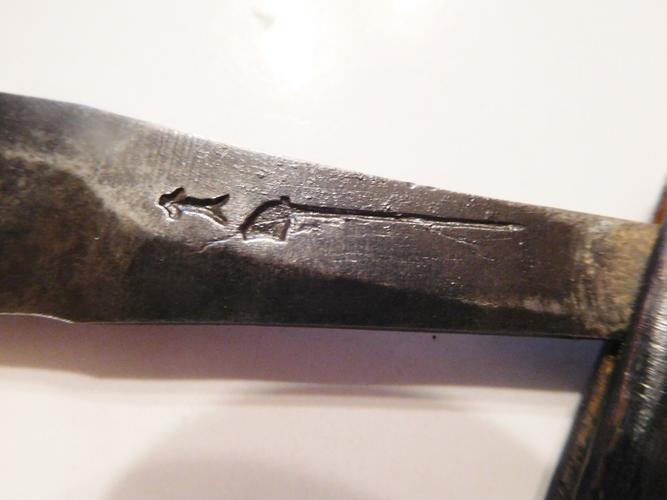
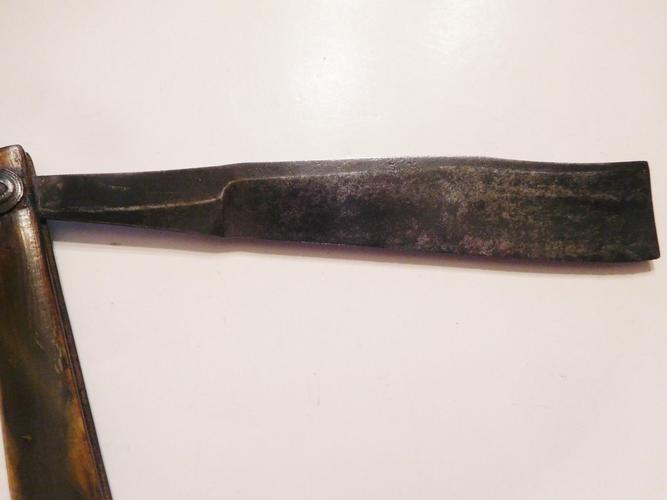
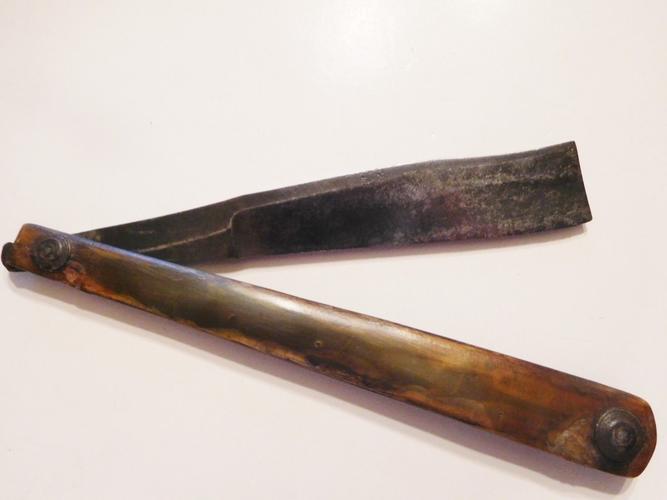
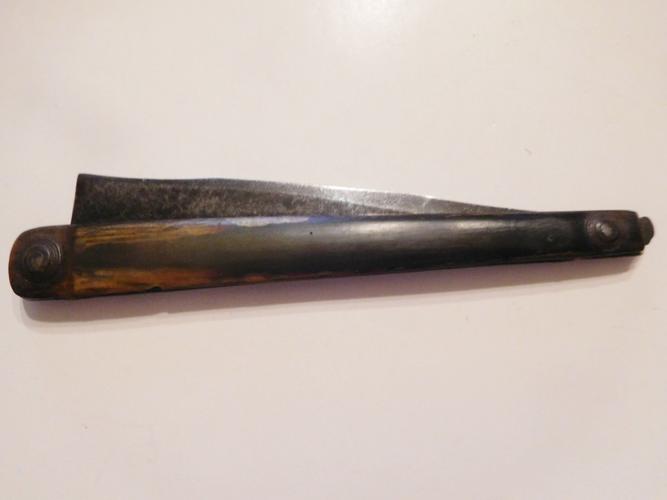
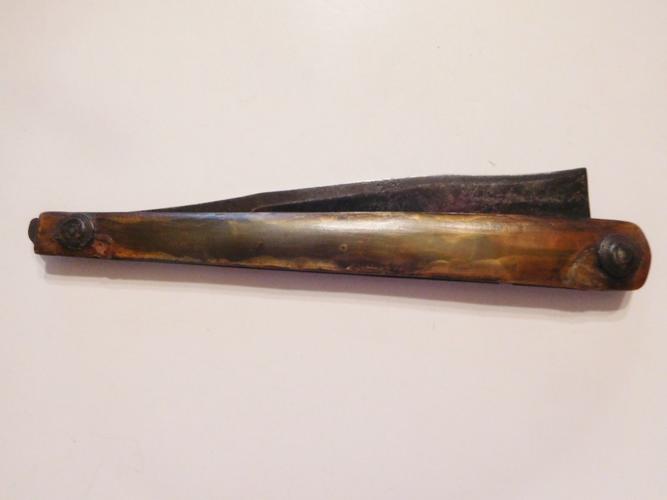

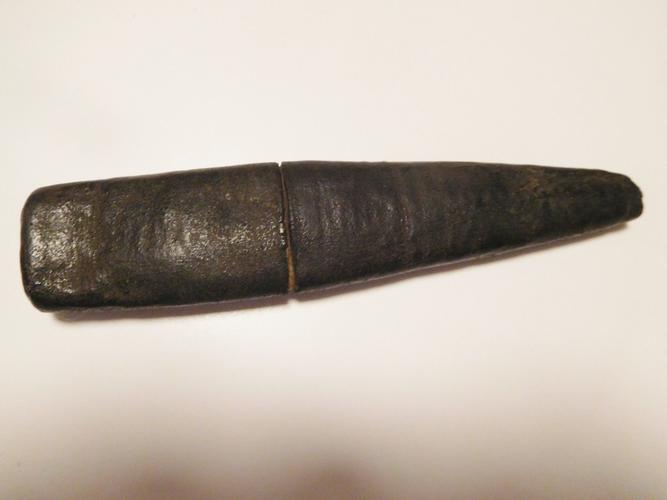

From my research: Christopher Bradshaw (or Bradshaw family) in the 1760's. Condition appears to be NOS...though I'll figure that out next week.
-
10-11-2018, 10:01 PM #6Junior Member

- Join Date
- Oct 2018
- Posts
- 19
Thanked: 25
Clarity:
The pipe and dart mark was in the Bradshaw family from 1698. That's the lower limit, though the style of the blade doesn't go back that far.
The tail style places the blade as prior to 1775 (ish)
The "dip-at-toe" on the spine places the blade (in the theory of this thread) at after 1755 (ish)
The Bradshaw family shows an uninterrupted Freedom/master lineage from 1698 though the early 1800s
All together, with other corroborating factors, puts the blade in the 1760s. The lack of wear on the spine and edge point to the blade never having been used. The original box (in crazy good condition) indicate that it was stock that was never removed from the box.
Looking forward to putting it to its intended purpose
-
The Following 3 Users Say Thank You to srsimon For This Useful Post:
782sirbrian (10-12-2018), Geezer (10-11-2018), MikeT (10-13-2018)
-
10-11-2018, 11:02 PM #7

I recommend getting in touch with Joan Unwin on that count. I would bet your razor was made by William Linley in the mid 1770's.
The marks as printed in sources like Gales & Martin or Sketchley's directory are often misprinted or wrong in some way compared to the actual products.
There are no Bradshaws listed in Sketchley's 1774 and only one in Gales & Martin 1787-- William, a pocket knife maker whose mark was "BRADSHAW", strongly indicating the pipe & dart was no longer in the family.
(The same William Bradshaw is listed in the 1790ish Universal British Directory, at which point he'd branched out into table knives)
It's also noteworthy that tail length is a very iffy indicator of age. There were significant variations from one manufacturer to another, and the concaved spine at the point of the blade was carried into the 1770's.
For an 18th century razor, there is remarkably little wear, but it is categorically not unused or even lightly used. When new, the 18th century Sheffield style had a flat line from point to tail. Yours has a very clear dip at the end of the sharpened edge. That dip is from significant wear. Also note the somewhat lighter bands of metal along the edge and spine -- those are very wide bands of hone wear.
All that said, it is likely to be entirely usable and definitely one of the older razors you can find.-Zak Jarvis. Writer. Artist. Bon vivant.
-


 317Likes
317Likes LinkBack URL
LinkBack URL About LinkBacks
About LinkBacks






 Reply With Quote
Reply With Quote

